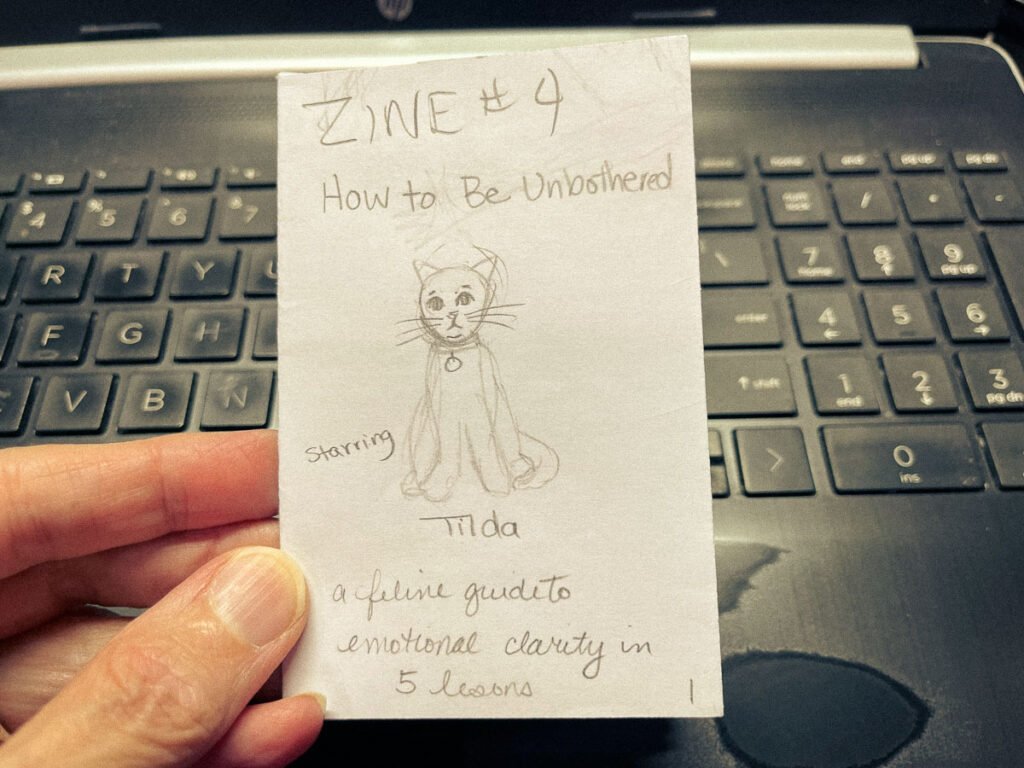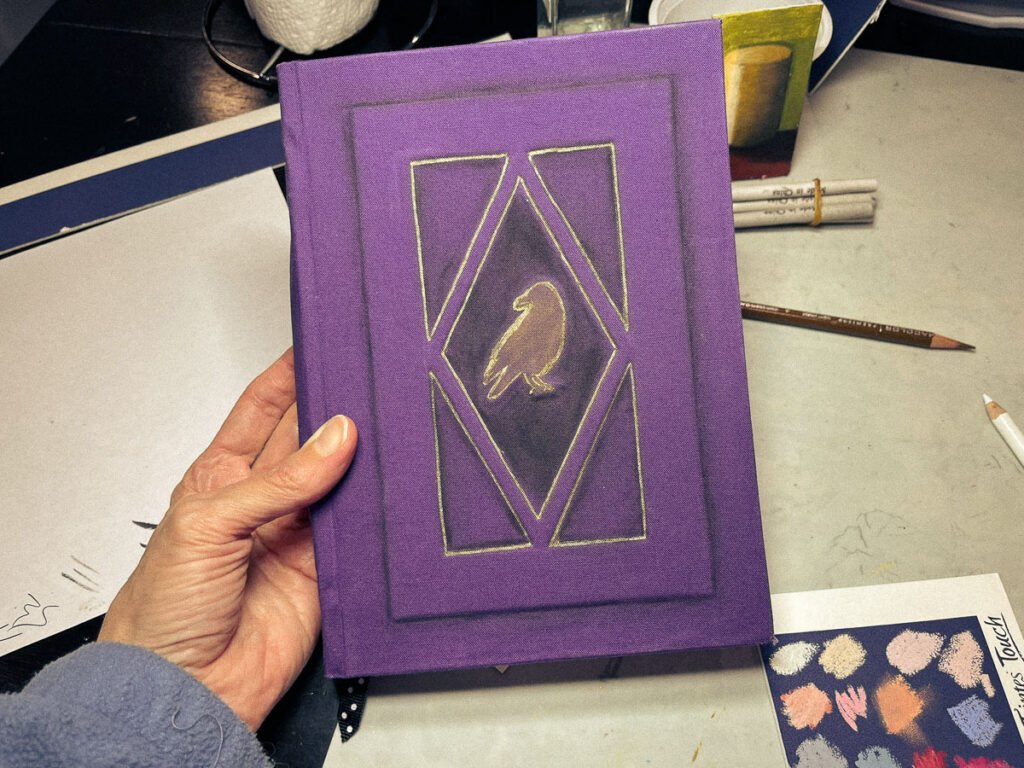Online zine-making seems to have gotten easier after only four issues, maybe because I’ve streamlined the process (or at least stopped reinventing the wheel each time).
The idea and draft
It starts with the idea. Some weeks it comes fast, other times I spend a couple of hours thinking it through. The easiest ideas show up when I’m doing something completely unrelated, like driving to the store. I’ll notice something that bothers me—like a new billboard going up on land that could’ve been something better for the community—and realize it might be a worry other people share.
That’s been the pattern so far: I write about things in my life that nag at me, assuming (or hoping) that someone else out there feels the same.
Once I hit on a topic, I draft what I want to say and write it on an 8.5x11" paper folded into a mini mockup. That gives me a physical layout I can hold and scribble in. It helps clarify where the text will go and gives me a list of illustrations to work from. I try to use the illustrations to communicate information that I’m not putting into the text, which is a fun challenge, and what I think illustration is all about.


